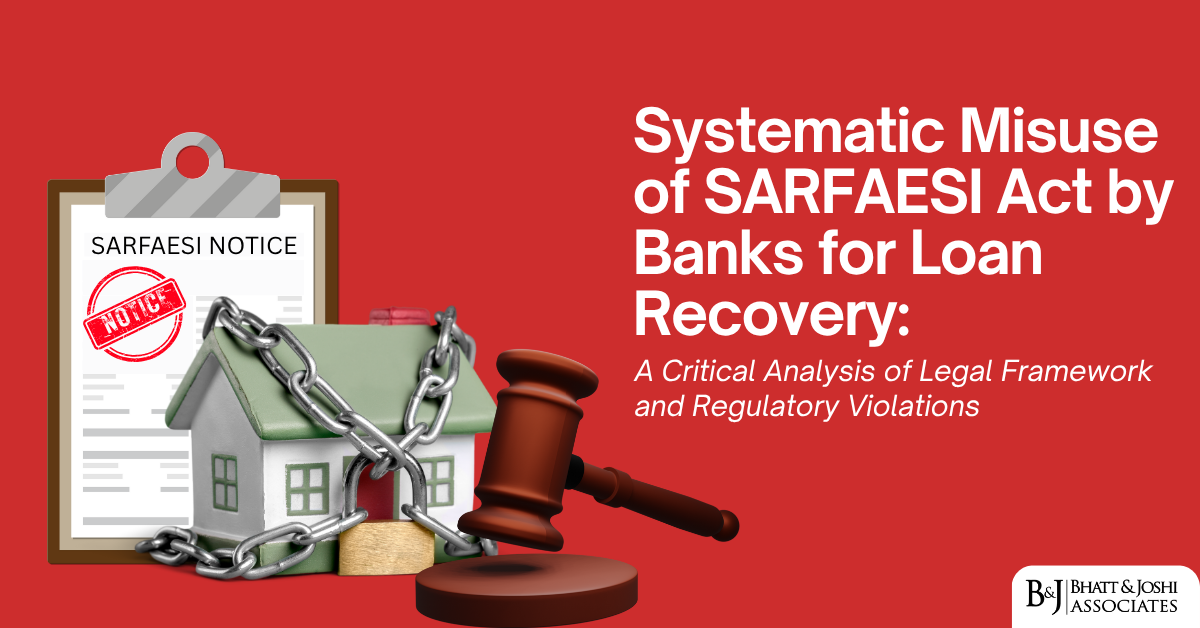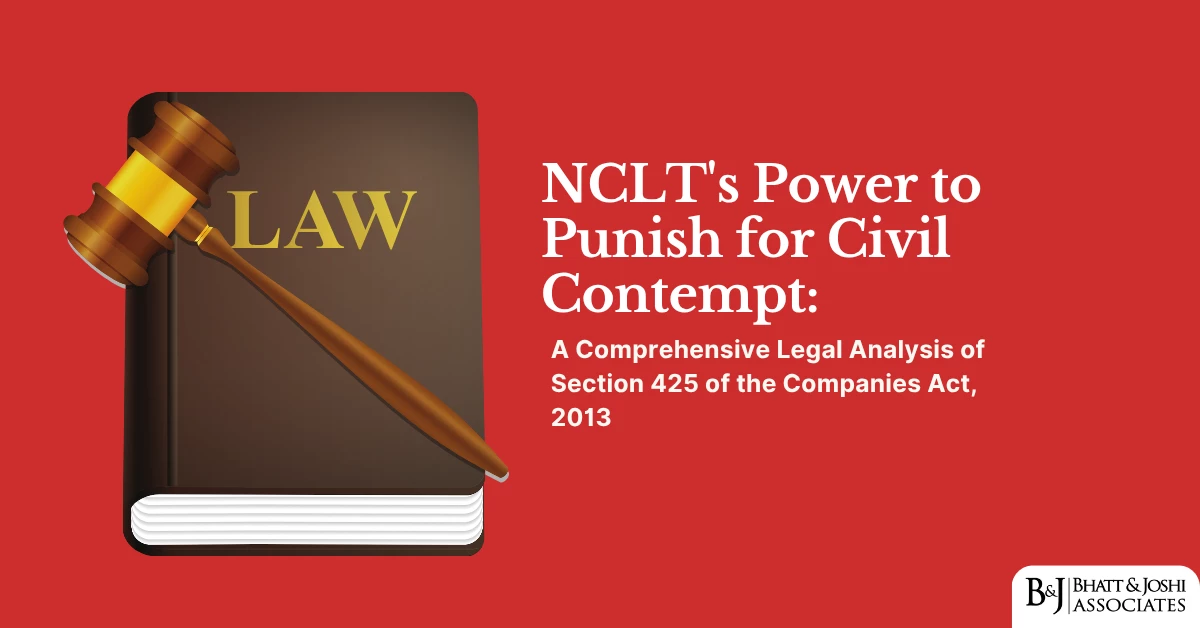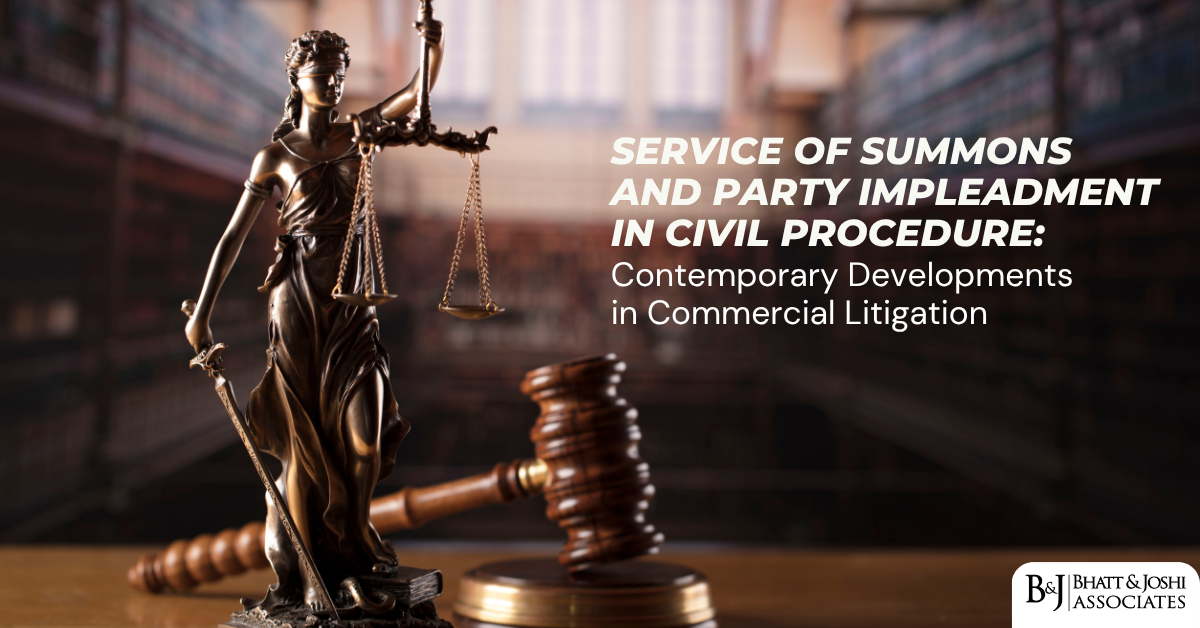Introduction
The Securitisation and Reconstruction of Financial Assets and Enforcement of Security Interest (SARFAESI) Act, 2002, represents one of the most powerful legislative instruments available to banks and financial institutions for recovering non-performing assets (NPAs) without judicial intervention [1]. However, the implementation of SARFAESI Act provisions by banks has witnessed systematic misuse, particularly in their approach to micro, small, and medium enterprises (MSME) loan recovery. This comprehensive analysis examines the legal framework governing SARFAESI proceedings, identifies patterns of regulatory violations, and explores the broader implications for borrower rights and financial stability.
The SARFAESI Act was enacted to address the mounting burden of NPAs in the Indian banking sector, providing secured creditors with extraordinary powers to enforce security interests without prolonged court proceedings [2]. Section 13 of the Act specifically empowers secured creditors to take possession of secured assets, including the authority to evict tenants, making it a formidable tool for debt recovery. However, observations from various State Level Inter-institutional Sub-committees (SLIIC) reveal that banks have adopted an increasingly aggressive stance, often circumventing due process requirements and violating Reserve Bank of India (RBI) guidelines in their eagerness to recover debts swiftly.
Legal Framework and Statutory Provisions
The SARFAESI Act 2002: Foundational Principles
The SARFAESI Act, officially titled “The Securitisation and Reconstruction of Financial Assets and Enforcement of Security Interest Act, 2002,” establishes a comprehensive framework for asset recovery by secured creditors [3]. The Act applies to all secured creditors including banks, financial institutions, and qualifying non-banking financial companies (NBFCs) with asset sizes exceeding prescribed thresholds.
Under Section 13(1) of the Act, any security interest created in favour of any secured creditor may be enforced by such secured creditor without the intervention of any court or tribunal. This provision fundamentally alters the traditional debt recovery mechanism by eliminating judicial oversight, provided the statutory requirements are satisfied. The Act defines “secured creditor” under Section 2(1)(zd) as any bank or financial institution or any other person in whose favour a security interest is created.
Section 13(2) of the SARFAESI Act empowers secured creditors to serve notice upon borrowers for taking possession of secured assets. The statutory language is precise: “Where any borrower, who is liable to pay any amount to a secured creditor, makes any default in repayment of secured debt, the secured creditor may require the borrower by notice in writing to discharge in full his liabilities to the secured creditor within sixty days from the date of notice failing which the secured creditor shall be entitled to exercise all or any of the rights under sub-section (4).”
RBI Guidelines and Regulatory Framework
The Reserve Bank of India has issued comprehensive guidelines governing the classification of assets as NPAs and the subsequent recovery procedures. According to RBI Master Circular on Income Recognition and Asset Classification, an asset becomes non-performing when it ceases to generate income for the bank. For term loans, this occurs when interest or principal installment remains overdue for more than 90 days [4].
The RBI’s timeline framework establishes clear parameters for NPA classification. If an account does not reflect credits for 90 days preceding the balance sheet date, it qualifies for NPA classification. However, temporary deficiencies such as delayed submission of stock statements, balance outstanding exceeding drawing power, or non-renewal of limits should not automatically result in NPA categorization unless they persist beyond prescribed periods.
For MSME accounts specifically, the RBI has mandated that if borrowers fail to pay three consecutive installments after the initial 90-day period but within 12 months, the account becomes sub-standard NPA. This timeline theoretically provides borrowers with approximately 17 months before banks can initiate SARFAESI proceedings, assuming compliance with all statutory notice requirements.
Systematic Violations and Misuse Patterns
Premature Invocation of SARFAESI Proceedings
Banks have demonstrated a concerning pattern of premature invocation of SARFAESI provisions, often disregarding the mandatory timelines established by RBI guidelines. Documentation from SLIIC proceedings reveals instances where public sector banks have initiated asset sale processes within 15 days of declaring assets as NPAs, completely bypassing the required notice periods and borrower consultation processes [5]. This reflects a broader trend in the misuse of SARFAESI Act by banks, particularly in their aggressive pursuit of recovery without adherence to due process.
This practice violates Section 13(3)(a) of the SARFAESI Act, which mandates that before proceeding with asset sale, secured creditors must obtain valuation of secured assets from approved valuers and communicate such valuation to borrowers. The Act further requires that borrowers be given adequate opportunity to raise objections regarding the valuation, a procedural safeguard that banks frequently ignore in their haste to recover dues.
Misclassification of Wilful Defaulters
The concept of “wilful defaulter” carries significant legal consequences under banking regulations. According to RBI Master Circular on Wilful Defaulters (RBI/2014-15/73 DBR.No.CID.BC.57/20.16.003/2014-15 dated July 1, 2015), a wilful defaulter is defined as a borrower or guarantor who has committed wilful default with outstanding amounts of Rs. 25 lakh and above [6].
The RBI circular specifically identifies six categories of wilful default: deliberate non-payment despite adequate cash flow and net worth; siphoning of funds to the detriment of the defaulting unit; non-purchase of financed assets or sale of assets with misutilisation of proceeds; misrepresentation or falsification of records; disposal or removal of securities without bank knowledge; and fraudulent transactions by borrowers.
Banks have systematically misapplied these criteria, classifying routine MSME NPAs as wilful defaulters to bypass the mandatory 60-day notice requirement under Section 13(2). This misclassification enables banks to initiate SARFAESI proceedings without proper notice, violating fundamental principles of natural justice and due process.
Valuation and Asset Sale Irregularities
Section 13(8) of the SARFAESI Act mandates that asset valuation must be conducted by approved valuers before initiating sale proceedings. The Act requires banks to communicate valuation details to borrowers and provide opportunities for objection. However, practical implementation reveals systematic violations of these requirements.
Banks routinely fix reserve prices without consulting borrowers or considering their objections, violating Section 13(3)(a) requirements. The 30-day notice period mandated before asset sale is frequently shortened or ignored entirely. These practices not only violate statutory requirements but also undermine the Act’s underlying principle of balancing creditor rights with borrower protections.
Asset Reconstruction Companies and Transfer Mechanisms
Legal Framework for Asset Transfers
The SARFAESI Act provides for the establishment of Asset Reconstruction Companies (ARCs) under Chapter III. These entities, licensed by RBI, can acquire financial assets from banks through securitisation or reconstruction processes. Section 5 of the Act requires all securitisation transactions to be registered with the Central Registry maintained by the Central Government.
ARCs operate through Security Receipts (SRs), which represent beneficial interest in the underlying assets. The RBI guidelines issued in 2003 specify that ARCs must notify separate schemes for each financial asset acquired, maintaining scheme-wise accounts and ensuring transparent operations [7].
Preferential Transfer Practices
Banks have demonstrated a concerning preference for transferring NPAs to ARCs rather than exploring One Time Settlement (OTS) options with borrowers. This practice raises questions about the banks’ commitment to maximizing recovery, as OTS arrangements often yield higher realization than ARC transfers.
The typical ARC transaction involves banks bundling multiple NPAs and selling them at significant discounts, often without disclosure to borrowers or SLIIC committees. The standard sharing mechanism between banks and ARCs follows an 85:15 ratio, meaning if a Rs. 100 lakh loan is sold for Rs. 60 lakh to an ARC and subsequently realizes Rs. 50 lakh, the bank receives only Rs. 42.50 lakh while completely writing off the account.
This mechanism effectively allows banks to remove NPAs from their books while potentially shortchanging both borrowers and the recovery process. The lack of transparency in ARC pricing and the preference for such transfers over direct borrower negotiations suggests systematic bias in the recovery process.
Regulatory Oversight and Compliance Gaps
RBI’s Supervisory Role
The Reserve Bank of India maintains supervisory authority over SARFAESI implementation through various circulars and guidelines. The RBI’s Framework for Compromise Settlements and Technical Write-offs, updated in June 2023, provides detailed procedures for handling distressed assets [8]. However, enforcement mechanisms remain inadequate to prevent systematic misuse of SARFAESI Act by banks.
The RBI’s Master Direction on Treatment of Wilful Defaulters, finalized in 2024, emphasizes procedural fairness and natural justice principles. The direction requires banks to provide borrowers access to all relevant investigation material before classification as wilful defaulters, addressing long-standing concerns about arbitrary classifications. However, implementation of these enhanced protections remains inconsistent across banking institutions.
Banking Ombudsman Mechanism
Section 17 of the SARFAESI Act provides for appeals to Debt Recovery Tribunals (DRTs) against actions taken by secured creditors. However, the Banking Ombudsman mechanism offers an alternative dispute resolution avenue that remains underutilized. The Ombudsman can function as an arbitrator to settle distressed asset closures where mutually agreed pricing might prove more beneficial than asset enforcement proceedings.
Despite this alternative mechanism, fewer than 5% of cases utilize OTS options, raising questions about the bona fides of banks’ recovery efforts. The reluctance to pursue negotiated settlements suggests that banks prioritize book-cleaning over actual recovery maximization.
Impact on MSME Sector
Disproportionate Effects on Small Enterprises
The MSME sector faces disproportionate impact from aggressive SARFAESI implementation due to several structural factors. Small enterprises typically lack sophisticated legal support to navigate complex recovery proceedings, making them vulnerable to procedural violations. The sector’s dependence on working capital financing creates particular vulnerability to cash flow disruptions caused by premature asset freezing.
SLIIC proceedings have documented numerous cases where banks have engaged recovery agents for coercive measures, violating both SARFAESI provisions and RBI guidelines. Such practices not only breach legal requirements but also create broader economic disruption in the MSME ecosystem.
Economic Consequences
The systematic misuse of SARFAESI Act by banks creates significant economic externalities beyond individual borrower impact. Aggressive recovery practices discourage entrepreneurship and innovation in the MSME sector, while procedural violations undermine confidence in the formal banking system. The preference for asset liquidation over restructuring destroys productive assets and eliminates employment opportunities.
Judicial Interpretations and Case Law
Supreme Court Jurisprudence
The Supreme Court of India has consistently emphasized the need for procedural compliance in SARFAESI proceedings. In Mardia Chemicals Ltd. v. Union of India (2004), the Court established that while SARFAESI provides extraordinary powers to secured creditors, these powers must be exercised within statutory constraints and with due regard for borrower rights [9].
The Court’s decision in Transcore Vs. Union of India (2008) further clarified that SARFAESI proceedings must comply with principles of natural justice, particularly regarding notice requirements and opportunity for hearing. These judicial pronouncements establish clear legal precedents for challenging procedural violations in SARFAESI implementation.
High Court Decisions
Various High Courts have addressed specific aspects of misuse of SARFAESI Act by banks. The Delhi High Court in Phoenix ARC Vs. Spentex Industries (2010) emphasized the importance of proper valuation procedures and borrower consultation before asset sale. The Bombay High Court in Kotak Mahindra Bank Vs. Girnar Corrugation (2015) highlighted the necessity of following prescribed timelines and notice requirements.
These judicial interventions demonstrate growing recognition of systematic violations in SARFAESI implementation and the need for enhanced procedural safeguards.
Recommendations for Reform
Strengthening Regulatory Oversight
The RBI must enhance its supervisory mechanisms to ensure compliance with SARFAESI guidelines. Regular audits of bank recovery practices, particularly regarding timeline compliance and borrower consultation requirements, should be mandated. Penalties for procedural violations must be strengthened to create effective deterrents against misuse of SARFAESI Act by banks.
Enhanced Borrower Protections
The SARFAESI Act requires amendments to strengthen borrower protections while maintaining its essential recovery mechanisms. Mandatory cooling-off periods before asset sale, enhanced notice requirements, and compulsory exploration of restructuring options could balance creditor and borrower interests more effectively.
Alternative Dispute Resolution
The Banking Ombudsman mechanism should be strengthened and promoted as a primary avenue for resolving SARFAESI disputes. Mandatory mediation before asset enforcement could reduce adversarial proceedings while improving recovery outcomes for all parties.
Transparency in ARC Operations
Asset Reconstruction Company operations require enhanced transparency, including mandatory disclosure of asset pricing to borrowers and regulatory authorities. The preferential treatment of ARC transfers over direct borrower negotiations should be subject to regulatory scrutiny and justification requirements.
Future Outlook and Conclusions
The SARFAESI Act represents a crucial component of India’s financial sector infrastructure, providing necessary tools for maintaining banking system stability through efficient NPA recovery. However, systematic misuse of its provisions threatens to undermine both its effectiveness and its legitimacy. Banks’ aggressive implementation practices, characterized by procedural violations and disregard for borrower rights, require immediate regulatory intervention.
The path forward requires balanced reform that preserves the Act’s essential recovery mechanisms while strengthening procedural safeguards and borrower protections. Enhanced regulatory oversight, judicial scrutiny, and legislative refinement can help realize the Act’s original objectives while preventing misuse of SARFAESI Act by banks and ensuring accountability in enforcement practices.
The MSME sector’s particular vulnerability to misuse of SARFAESI Act by banks demands targeted protective measures, including enhanced notice requirements, mandatory restructuring consideration, and strengthened alternative dispute resolution mechanisms. Only through such comprehensive reform can the SARFAESI Act fulfill its intended role as an efficient and fair debt recovery mechanism.
Ultimately, the challenge lies in creating a regulatory framework that balances the legitimate needs of secured creditors for swift asset recovery with fundamental principles of due process and borrower rights. The current system’s systematic violations suggest that this balance has tilted too far in favor of creditors, requiring immediate corrective action to restore equity and effectiveness to the debt recovery process.
References
[1] The Securitisation and Reconstruction of Financial Assets and Enforcement of Security Interest Act, 2002. Available at: https://www.indiacode.nic.in/bitstream/123456789/2006/1/A2002-54.pdf
[2] Reserve Bank of India. “SARFAESI Act, 2002 – Applicability and Guidelines.” Available at: https://www.rbi.org.in/commonman/english/scripts/Notification.aspx?Id=877
[3] ClearTax. “SARFAESI Act, 2002 – Applicability, Objectives, Process, Documentation.” Available at: https://cleartax.in/s/sarfaesi-act-2002
[4] Reserve Bank of India. “Income Recognition and Asset Classification Norms.”
[5] Kotak Bank. “SARFAESI Act 2002: Guide to NPA Recovery & Asset Auction.” Available at: https://www.kotak.com/en/stories-in-focus/loans/home-loan/sarfaesi-act-2002.html
[6] Reserve Bank of India. “Master Circular on Wilful Defaulters” RBI/2014-15/73 DBR.No.CID.BC.57/20.16.003/2014-15. Available at: https://www.rbi.org.in/commonman/English/scripts/Notification.aspx?Id=1458
[7] iPleaders. “Overview of the SARFAESI Act, 2002.” Available at: https://blog.ipleaders.in/overview-of-the-sarfaesi-axt-2002/
[8] Reserve Bank of India. “Framework for Compromise Settlements and Technical Write-offs” (June 2023). Available at: https://rbi.org.in/commonman/english/Scripts/FAQs.aspx?Id=3459
[9] IndiaFilings. “Sarfaesi Act – Rules & Regulations.” Available at: https://www.indiafilings.com/learn/sarfaesi-act-india/
[10] LegalPay. “What Are Your Rights Under the SARFAESI Act, 2002?” Available at: https://www.legalpay.in/post/what-are-your-rights-under-the-sarfaesi-act-2002
[11] Testbook. “SARFAESI Act, 2002 – Objectives, Provisions & Working.” Available at: https://testbook.com/ias-preparation/what-is-sarfaesi-act
[12] Bajaj Finserv. “SARFAESI Act 2002: Full Form, Meaning and Objectives.” Available at: https://www.bajajfinserv.in/sarfaesi-act
[13] OneNDF. “Latest Updates of SARFAESI Act 2002 & Methods of Recovery of NPA Loans.” Available at: https://www.onendf.com/sarfaesi-act-2002/
[14] LiveLaw. “NPA, Wilful Defaulter, Income Recognition, Asset Classification.” Available at: https://www.livelaw.in/law-firms/law-firm-articles-/npa-wilful-defaulter-income-recognition-asset-classification-rbi-state-bank-of-india-205999
[15] Law School Policy Review. “Analyzing RBI’s Finalized Master Direction on Treatment of Wilful Defaulters.” Available at: https://lawschoolpolicyreview.com/2024/09/24/part-ii-from-draft-to-directive-analyzing-rbis-finalized-master-direction-on-treatment-of-wilful-defaulters/
[16] MetaLegal. “RBI’s 2024 Direction on Wilful and Large Defaulters Framework.” Available at: https://www.metalegal.in/post/rbi-s-2024-directions-on-wilful-large-defaulters-a-comprehensive-framework-for-transparent-classi
PDF Links to Full Judgments
Authorized by Prapti Bhatt














